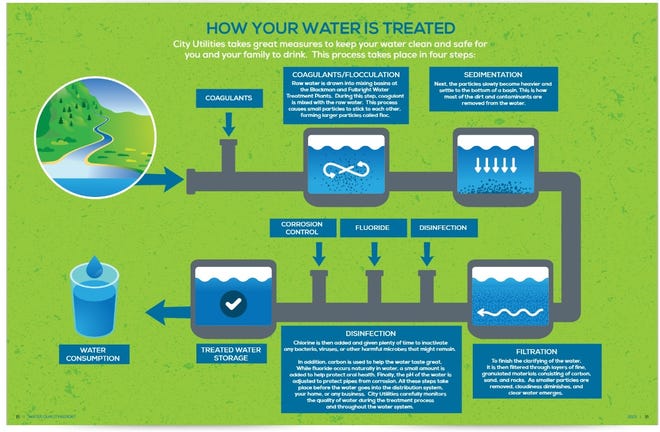By Sara Karnes 2022,
Looking at the building that processes one-third of the drinking water for Springfield, you wouldn't think it was necessarily a water treatment plant, although it is reminiscent of the bathhouses in Hot Springs, Arkansas.
The red brick structure was built in 1940 and sits next to the Fulbright Spring, which spans back to at least 1883, according to City Utilities Water Treatment & Supply manager Alan Jones.
The Fulbright Water Treatment Plant, at 3920 N. Farm Rd. 147, sends 9 million gallons from the spring and 3 million gallons from about a 1,400-foot deep well, dug in 1915, to the Springfield area, Jones said. An average day sees 40 million gallons used by residents. That amount is a bit high but not at capacity, which is a max of about 57 million gallons.
A majority of Springfield's drinking water is sent from Fellows Lake and James River through Blackman Water Treatment Plant.
The original plant was built in 1910 and produced 6 million gallons a day, but it has seen upgrades. Walls have been added and so has a roof. Now, it houses the chemicals used for processing the drinking water.

Once water leaves McDaniel Lake, the spring or the well, it gets pushed into coagulants and flocculation. Raw water is drawn into mixing basins with coagulants, which causes small particles to stick to each other and form larger particles, called floc.
Those particles get heavier and settle at the base of the pool in what's called sedimentation. The water continues through the filtration of granulated materials, such as carbon, sand, and rocks. Water is then disinfected before being stored
"It's a fluid process," Jones said, explaining that the manner of treating water can be more difficult when it's cold, clean water rather than warmer, dirty water. "It's also harder to disinfect cold water."
Diesel engines help pump water where it needs to go and in the case of catastrophic weather, like the 2007 ice storm.
Blackman continued processing water without delays during that time, Jones said; however, Fulbright lost power and needed trees cleared around the McDaniel pump station and several other sites.



